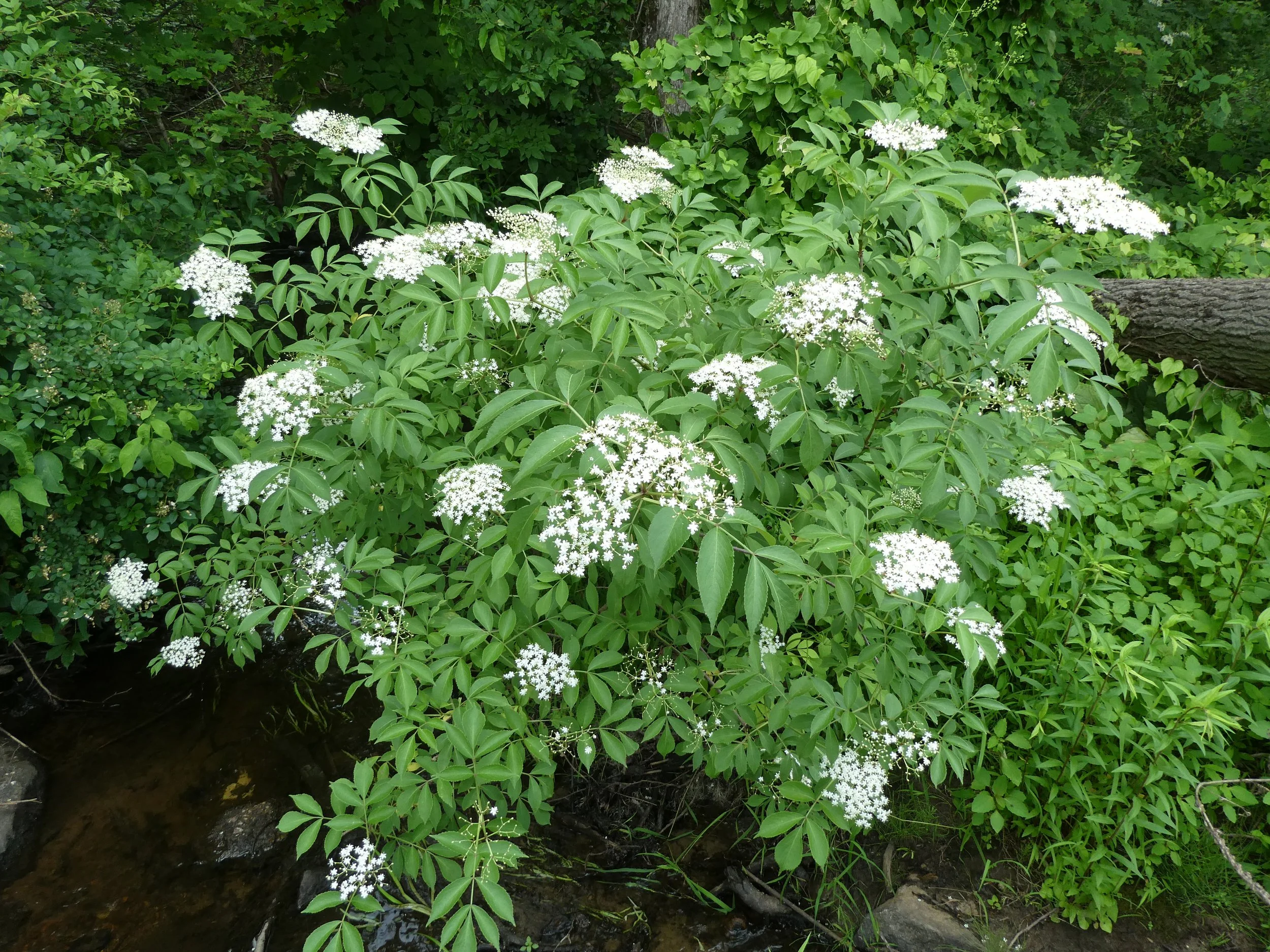American Beautyberry
(Callicarpa americana)
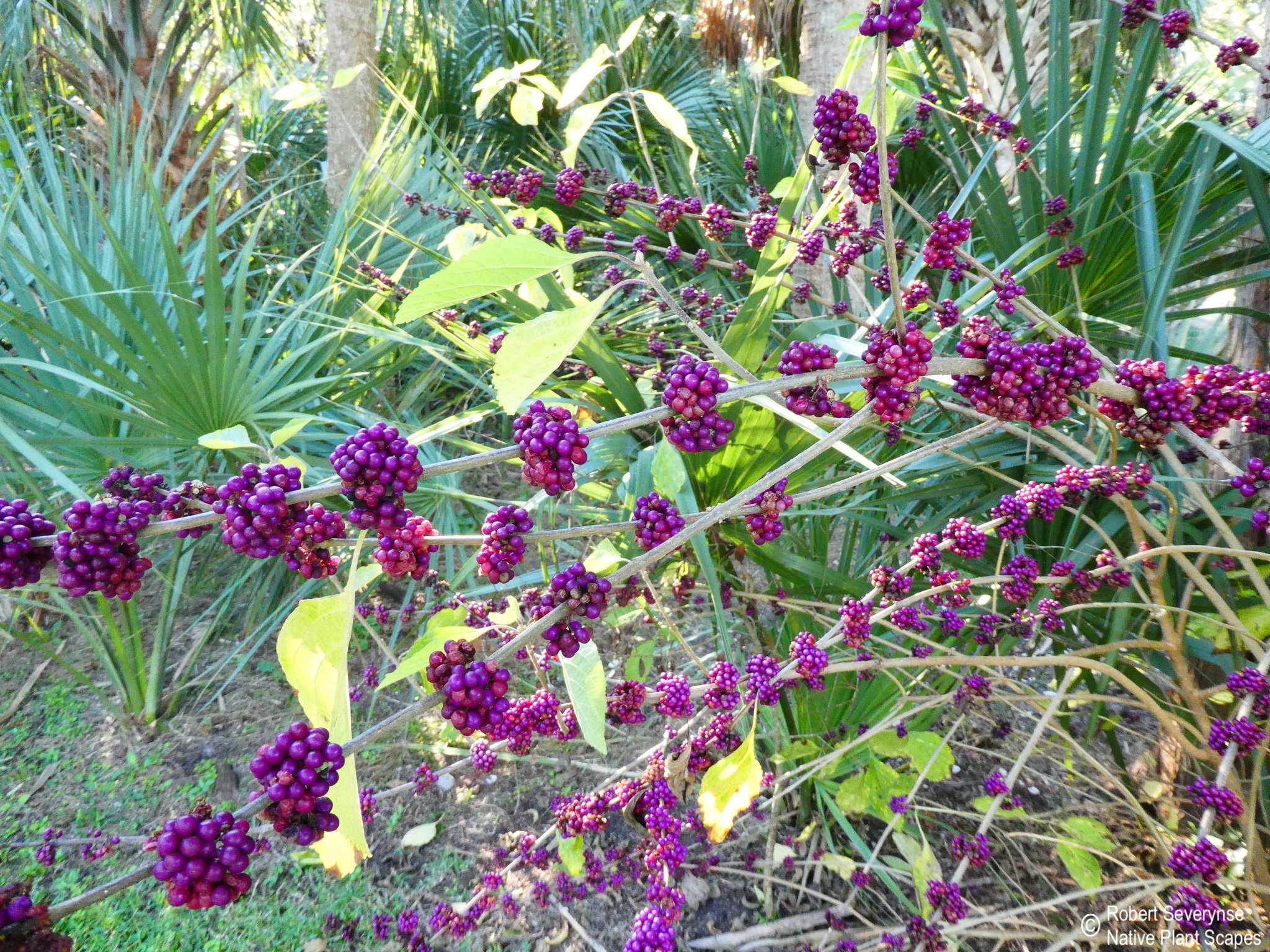
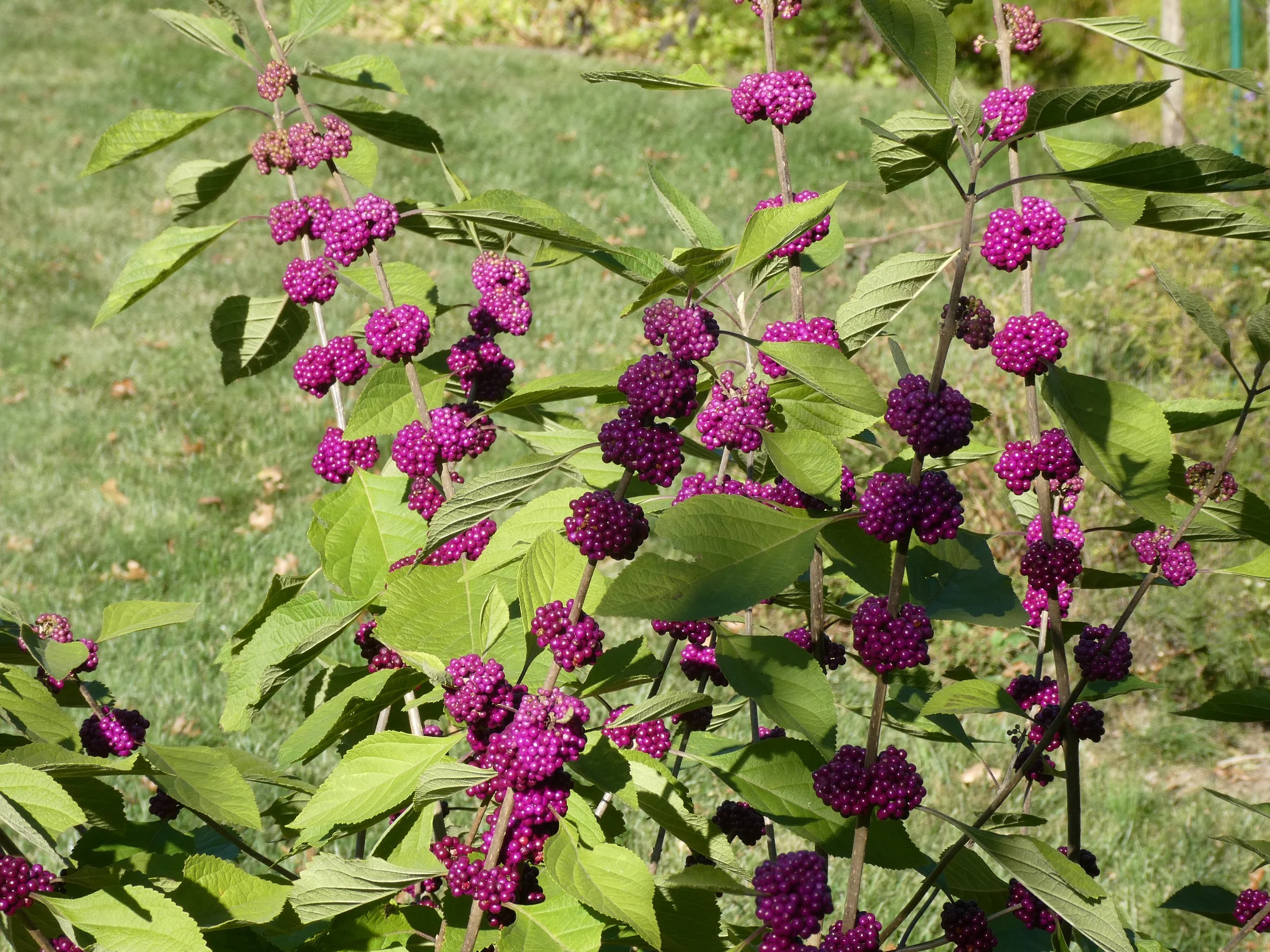
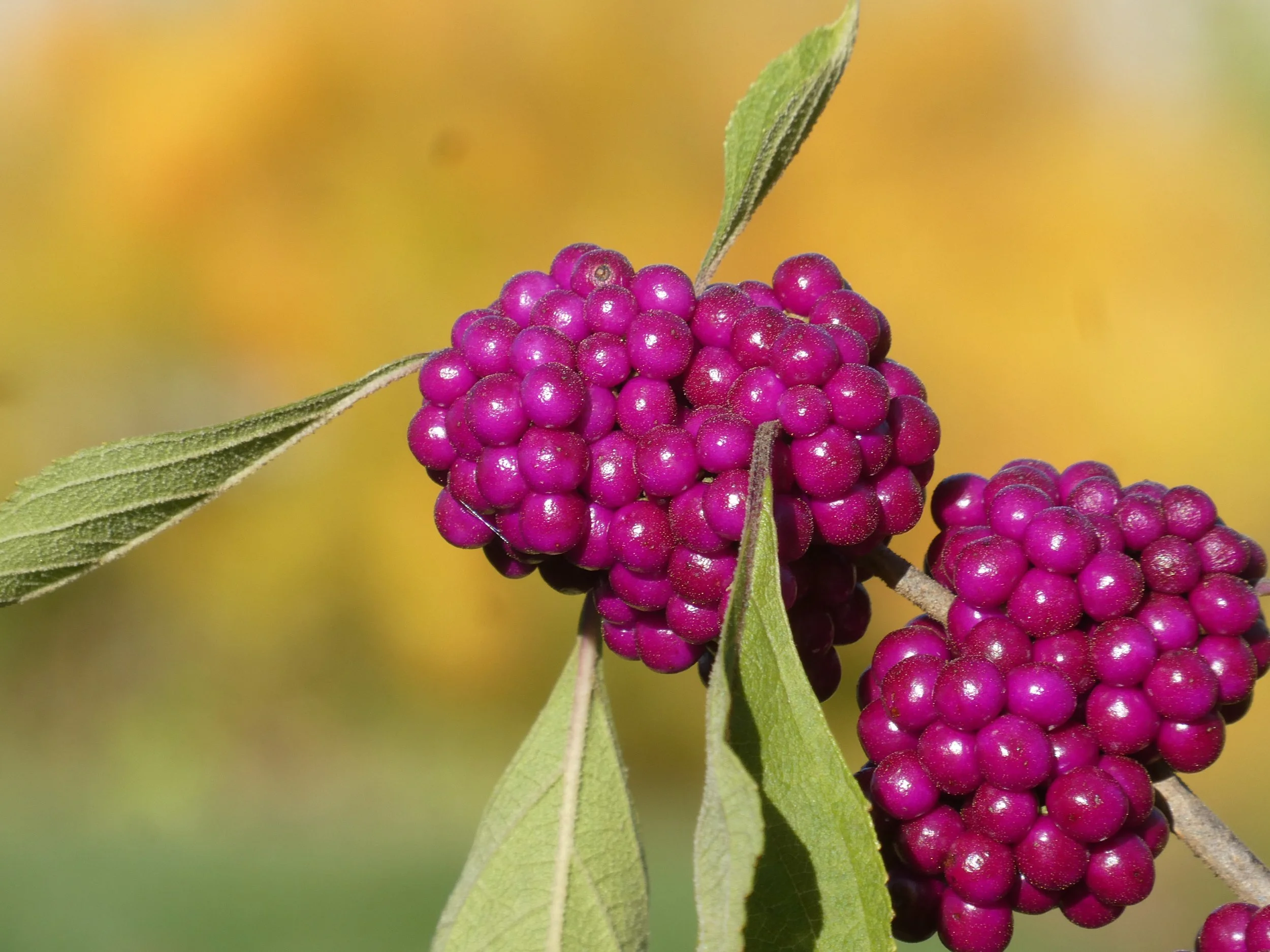
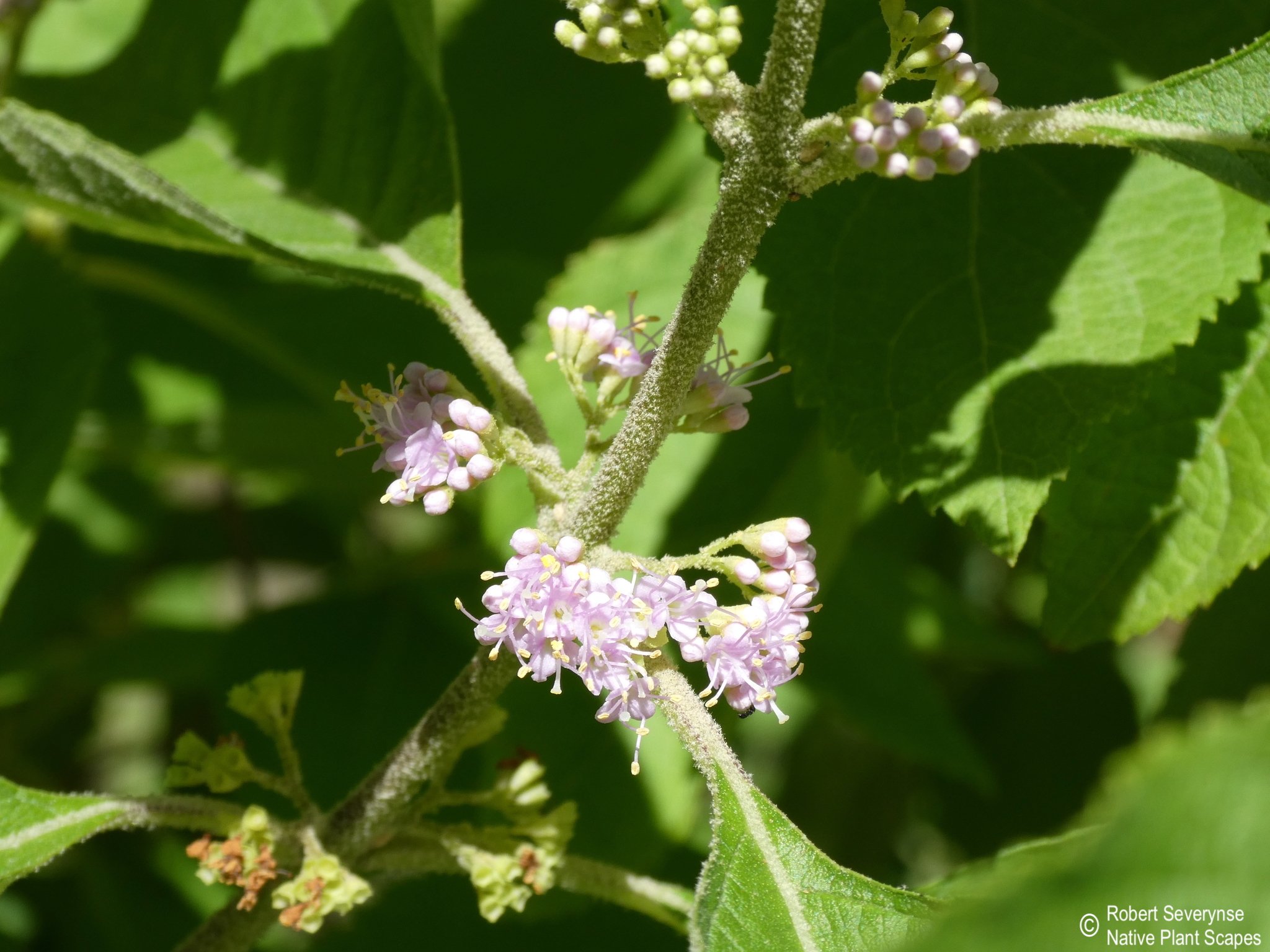
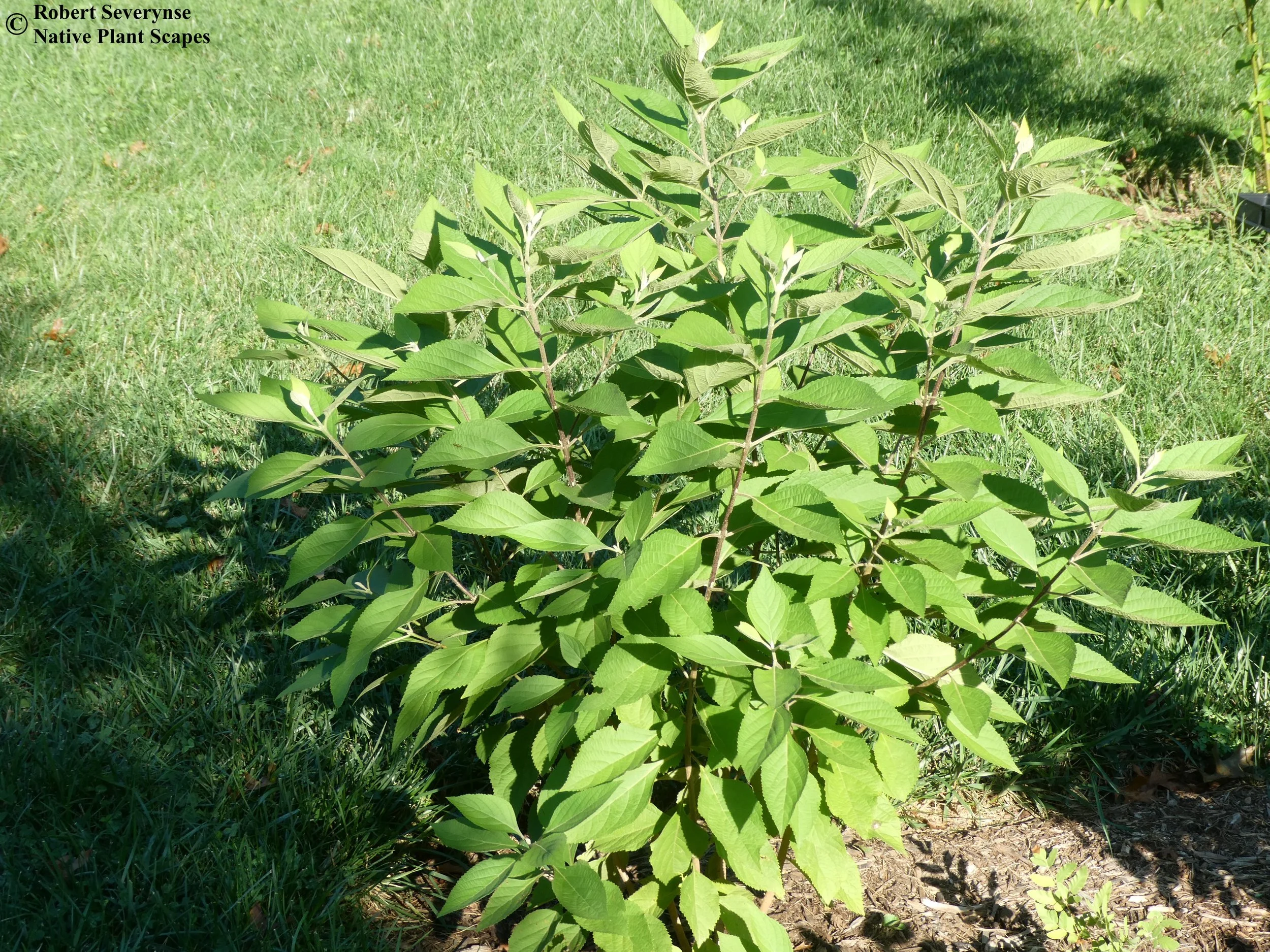
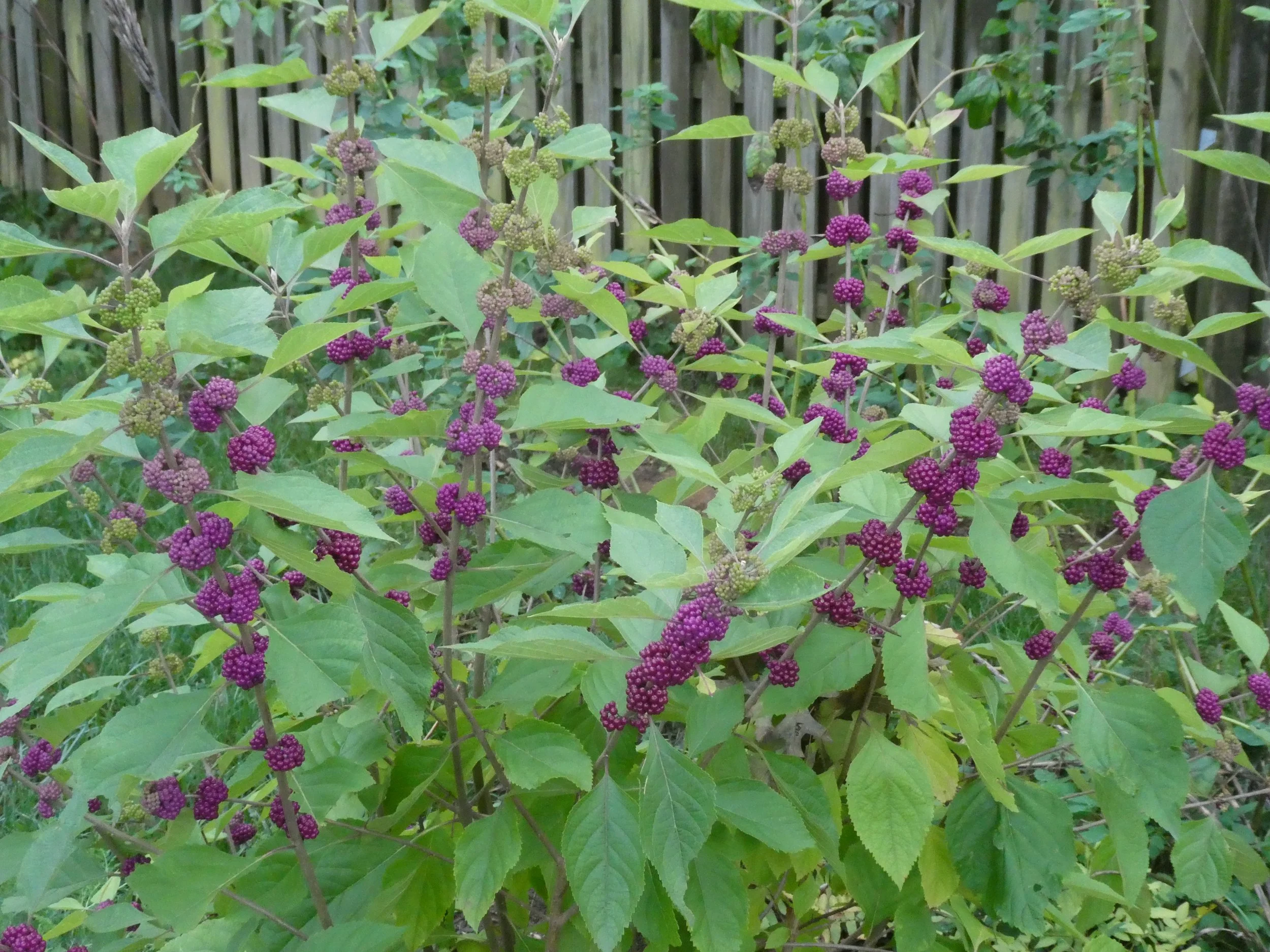

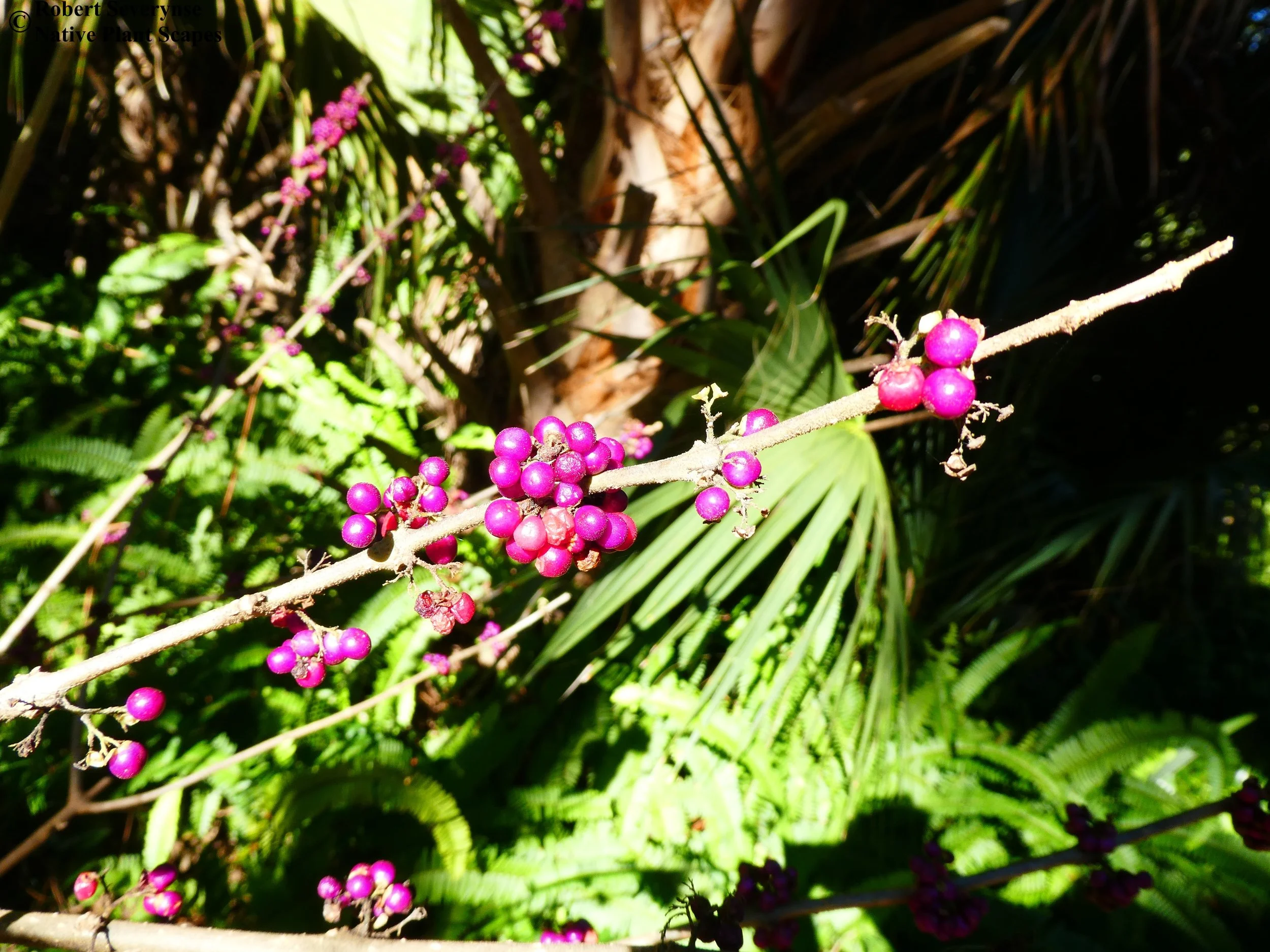

Other Information
Physical Characteristics
Type: Herbaceous Perennial
Height: 3 - 6 (Maybe to 8) ft
Spread: 3 - 6 ft
Flower Color: Pink / White
Flower Time: Early Summer (Jun - Jul)
Fruit Type: Drupe (Berry)
Fruit Color: Purple / Pink / Magenta
Autumn Color: Yellow-Green / Insignificant
Sun Conditions: Full Sun / Part Shade
Shade Tolerance: Medium
Moisture Preference: Low / Medium
Deer Resistance*: Low / Medium
Dog Safe**: Yes
Conservation Status (MD): SH - Possibly Extirpated
Other Names: French Mulberry
*Deer resistance can vary based on many factors
**Always consult with a veterinarian about plants toxic to dogs and other animals
Wildlife Benefits:
Beautyberry fruits are a food source for many birds (>10 species) and small mammals. It also provides cover for birds and small wildlife. In addition, flowers attract pollinators for both pollen and nectar. The Rustic Sphinx uses Beautyberry as a larval host. Deer browse on the twigs and leaves in the spring and summer. They will also eat the berries after they have fallen.
Plants similar to American Beautyberry:
Ilex verticillata - Winterberry Holly
Clethra alnifolia - Sweet Pepperbush
Sambucus canadensis - Black Elderberry



